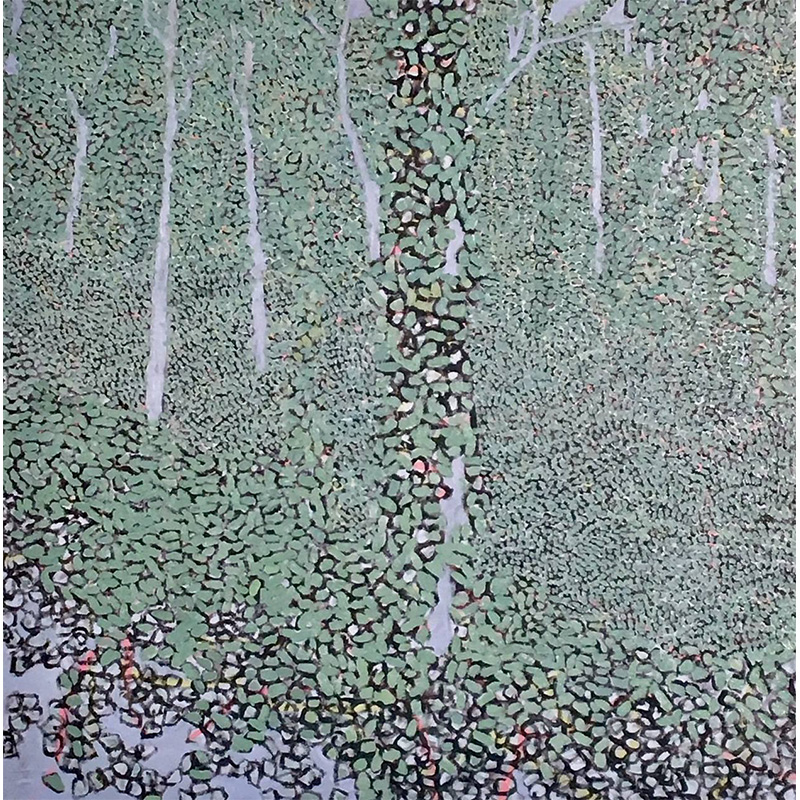The Creative Arts Guild invites you to join us in the opening for our newest exhibit: “INVASIVE!” by artist Jeffrey Morton. The opening reception is free and open to the public and will be held on January 11th from 5:30 to 7:30. The exhibit will continue to run January 11th thru February 21st, 2019.
For more info, please contact Creative Arts Guild Gallery Director, Savannah Thomas, at 706-279-3129 or at savannaht@creativeartsguild.org.
Encroach. Overstep. Invasive.
While all three of these words suggest an infringement on a social or physical boundary, invasive questions the nature of belonging. As a word and a concept, invasive is just plain harsh. In the botanical kingdom of plants, a foreign weed is like a disease; and it whether as a plant species or unwanted pest, like the European starling, it is ultimately undesirable. Many think of kudzu this way.
In a good year, or perhaps a bad one, the kudzu plant can grow about a foot per day and up to sixty feet per year. Additionally, for every foot above ground, there are three more feet below. Transplanted from Japan in 1876 as a decorative element for a tea garden built in Philadelphia’s Fairmount Park, kudzu thrives in the Southeastern United States. During the summer months, vines grow everywhere choking out trees, power poles, automobiles, and even buildings. Franklin Roosevelt’s New Deal established the Soil Conservation Service (SCS), who in 1933 purposed kudzu to eliminate earth erosion in the hills and valleys of Georgia, Tennessee, and Alabama. Today it has become prolific, and for some, an unwanted guest.
As a medical procedure, surgeons and patients seek an unobtrusive, minimally invasive event. Doctors want to do as little as possible to interfere with the human body. But invasive has a third meaning. Psychologically, the term connotes an action that tends to intrude our thought life or private mental spaces. We try hard to expunge the images housed in our mind. It is this psychological space that intrigues me about the subject of kudzu. Stepping into a field of kudzu is unknown; it is scary. While invasive might suggest a radicle form of displacement, it also suggests to me that it is here to stay at least until the next predatory species comes along.
About the Artist
Born and raised in Philadelphia, PA, Jeffrey Morton is a resident of Signal Mountain, TN. During a two-year residence in Japan, earlier in his career, Morton was drawn to Japanese art and culture which influences his work to this day. He has exhibited his work regionally and nationally, including the Delaware Center for Contemporary Art, Wilmington, the University of Tennessee, Knoxville, the Harrison Center for the Arts, Indianapolis, and the Hunter Museum in Chattanooga. Educated at Yale University and Temple University, Tyler School of Art in Philadelphia, Morton is a professor of art at Covenant College, Lookout Mountain, GA. Morton is a recipient of a 2016 Individual Artist Fellowship from the Tennessee Arts Commission.







